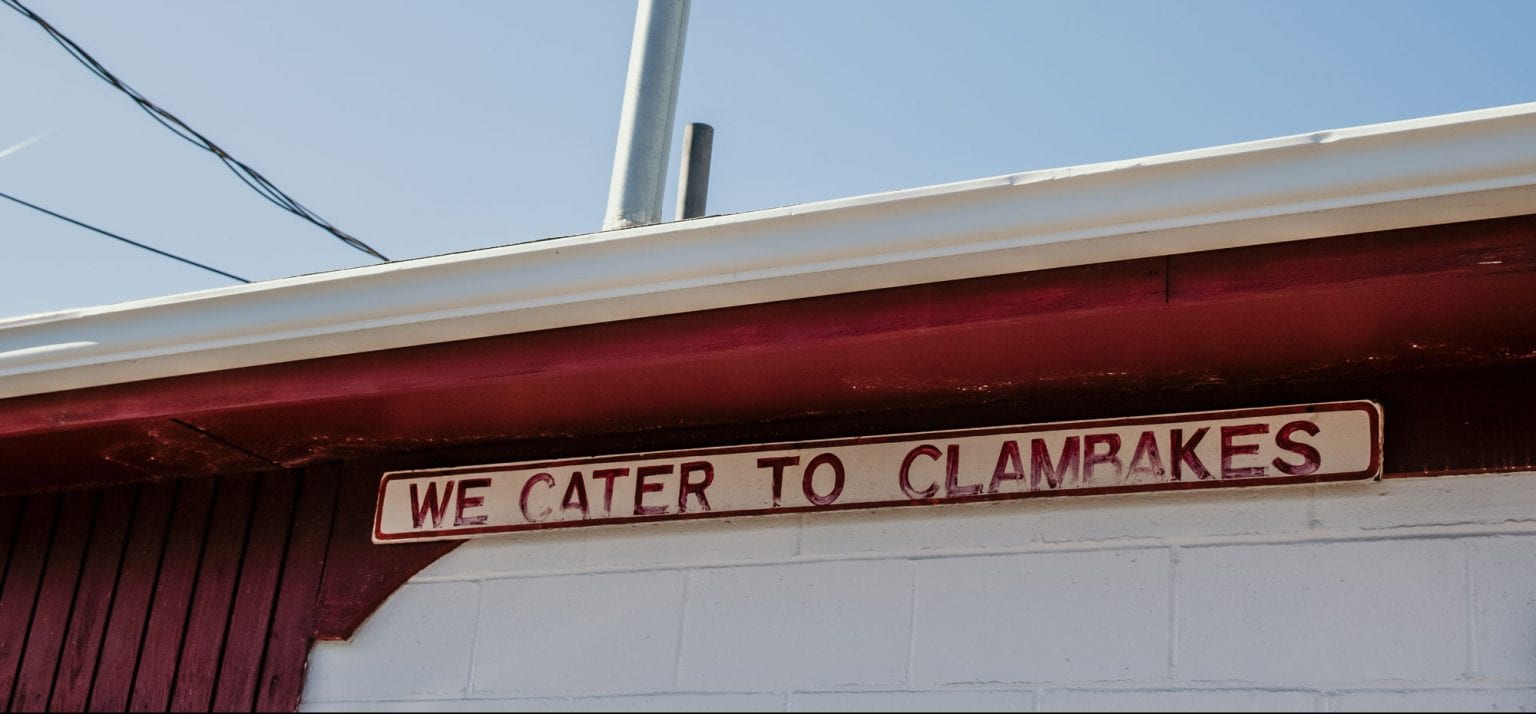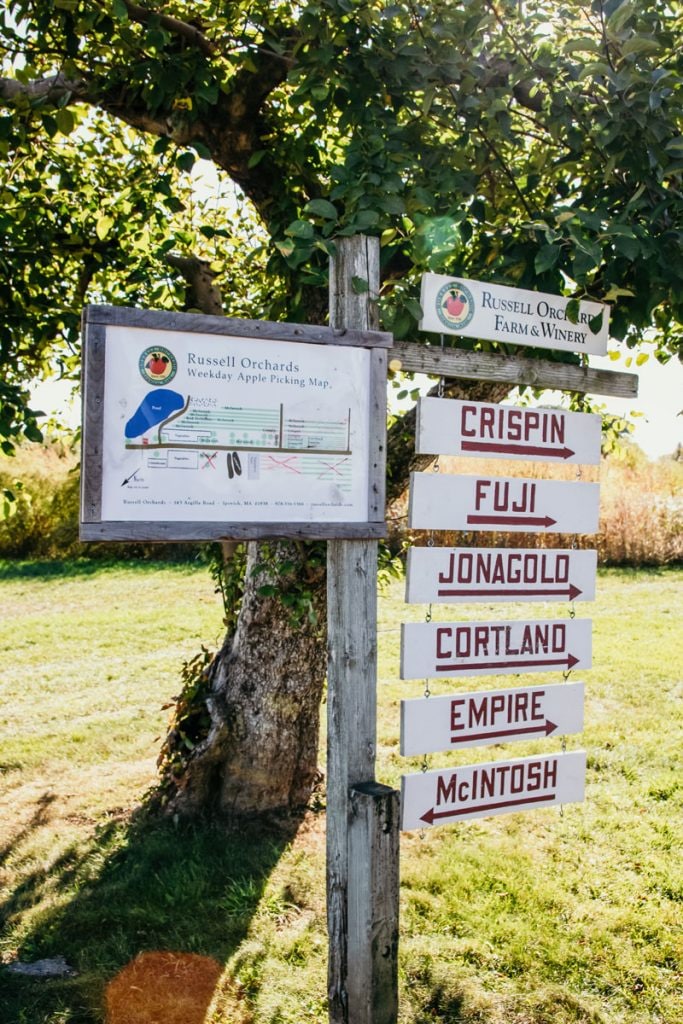
The North Shore of Massachusetts justifies stereotypes about the state, if only because of the names of its towns: Gloucester, Revere, Manchester — they all beg to be shouted with a thick Boston accent. It’s not just the dangling Rs, though. During the fall, the North Shore looks like it’s out of a postcard, with its windy coastal roads and vibrant foliage reminiscent of a smoldering fireplace.
One perfect autumn Friday in October, when the sky was pale blue and the air was biting, I took a road trip with my family to enjoy the only activities that seemed right: seafood, an orchard, and a last day at the beach.
Growing up in the Boston area, this is how we would mark the passage of time — how I could be assured that summer was really ending. Luckily for this year, these all happen to be socially distanced activities and a way to reclaim some normalcy.
Tradition is foundational to New England, which offers a sense of stability during an otherwise unprecedented year. Fenway Park may not have been open to fans this year, but as the baseball season came to a close, the leaves still changed and blueberries still gave way to apples.

Photos by Leo Schwartz
WOODMAN'S CLAM STRIP
If a North Shore town doesn’t have a name you can picture Ben Affleck saying, it probably has a name straight from the United Kingdom — Essex is the latter. Woodman’s is right on Essex’s main drag, advertising “Lobsters, steamers, and fried clams, open year round” to anybody who finds themselves driving through.
Woodman’s is one of those institutions that makes the area feel timeless. It’s been around for 100 years, and you can be rest assured it will be around another 100 more. Walking in, I asked the first person I could find if I could ask him a few questions about the restaurant — it turned out he was a third-generation Woodman himself. It’s that type of place.
So why did I choose Woodman’s for my last lobster roll of the season? If you tell anybody from New England that you are going to the North Shore, they will tell you to go to Woodman’s. Douglas helped me understand why.



Photos by Leo Schwartz
His grandfather started the restaurant back in 1914, opening a roadside store in the seaside town. He would go clamming himself, selling his ware (raw, not fried) at his small shack along with bubble gum and homemade potato chips. One day, a friend suggested he tried throwing a clam in the fat vat for the potato chips. He tried it — and the clam blew up. He went home, ready to call that his first and last attempt at deep frying shellfish, until his wife suggested he try to put it in corn flour first.
Thus was born the first Woodman’s clam strip. Auspiciously, the day of the successful experiment was July 3rd. During the parade the next day, he sold his new creation to the adoring crowds and made $35. “It was the most he ever made,” Douglas told me. “We’ve been selling them ever since.”
It is a secret formula that Woodman’s has been relying on for over a century. In recent years, the prized dish has become even more popular for its dietary fashionability: because the dredge is all corn, it is gluten-free. That aside, though, it is a clam strip unlike any I have tried, and I have had my fair share. The Woodman’s version is crunchy and light, giving way perfectly to the meaty interior. Generally, after a heaping portion of clam strips, you don’t exactly feel spritely. With Woodman’s, I felt ready to have another full plate.
"Covid has been tough for the business—over half of it normally comes from catering weddings and other events"
The continuity doesn’t just come from their recipes. The building itself has largely remained the same, save for a few additions. And the business has stayed in the family. Douglas is not the only Woodman behind the counter, but also his brother, his brother’s three sons, and even their kids. They are fifth-generation Woodmans now staffing the restaurant. “I come to work every day,” Douglas told me, “and I get to work with my family.”
Covid has been tough for the business — over half of it normally comes from catering weddings and other events, which is down 90 percent. Furthermore, their sales come mostly in the summer, which have been hampered by decreased travel.
Even so, this is a business that knows how to survive. Douglas told me a story about his grandfather, who happened to be an avid gambler along with being an expert fry cook. During the Great Depression, the bank was going to foreclose on Woodman’s. The grandfather was so depressed he went to Cape Cod for a short vacation. He noticed all the clammers digging up sea clams, and he had an idea: He would buy clams on the Cape and sell them to local clam chowder factory, Snow’s. He made enough money from the side hustle to save Woodman’s. He went to the bank with the money he owed, all in one-dollar bills, and dumped them on the table. “We’re through,” he told them.



Photos by Leo Schwartz
RUSSELL ORCHARDS
Just down the road, in the similarly named Ipswich, is another fixture of the community: Russell Orchards. Perhaps more than a clam picnic, it felt like the type of concentrated autumn that pumpkin spice lattes could only hope to achieve. Trees awash with shades of red and orange covered the expansive grounds. Eager families streamed in, ready to buy bushels of apples and bags of freshly baked cider donuts.
Russell Orchards has been around for over 100 years, always family-owned. The Russells are actually the third to run the farm — they bought it after a concerned group of neighbors purchased the property instead of letting it go to developers.
Inside the farmstand, I spoke with Devin Ferreira, who manages the produce program at the orchard. She told me that the farm has always grown apples, but the Russells started growing more crops: strawberries, raspberries and blackberries, currants, and all sorts of vegetables. They have a full bakery, responsible for the wafting scent of donuts and pie, and even make wines and hard cider out of their fruit.


Photos by Leo Schwartz
In the fall, though, it is all about the apples. They grow the fan favorites — McIntosh, Honeycrisp, Courtland — as well as some lesser-known, cult heirloom varieties, such as Liberty. They have over 15,000 trees on the property, which were impressively combed through by hungry patrons by the time we made it to the fields.
Ferreira told me about how the season has been complicated not only by Covid, but also a drought that swept through the region, affecting different sections of their grounds. They have managed to get by anyway and even saw increased foot traffic as people looked for outdoors-friendly activities.
The farm shuts down after Thanksgiving, even though agricultural workers spend much of the winter pruning the endless trees, weather permitting. Ferreira herself works in a nearby kitchen for the first few months of the frost, although she’s back in the greenhouse in February. “We’re always hard at work,” she told me.
Some of my earliest memories are from apple orchards, sitting on my dad’s shoulders to pick the biggest ones high up in the trees and sneaking in first bites, which everyone knows are the best. Besides that, what I remember most vividly is getting in the Atlantic when it’s way too cold, which for New England is most of the year.


Photos by Leo Schwartz
We ended our day at Crain’s Beach just as the sun began to set. I wasn’t brave enough to get in the water, although my sister immediately ran in. We set up some folding chairs on the beach — some of us warmer than others — and sat down to enjoy the last light. Smelling the salt air, filled with clams and apples, it could have been any year of my life. It just felt like fall.
Related Articles
-
 Travel & Culture March 16, 2020 | 6 min read Significance of Sustenance: Burlington I grew up in the shadow of the slopes in the Pocono Mountains, but the icy Pennsylvania conditions made skiing decidedly unfun for fall-prone little-ol’ me.
Travel & Culture March 16, 2020 | 6 min read Significance of Sustenance: Burlington I grew up in the shadow of the slopes in the Pocono Mountains, but the icy Pennsylvania conditions made skiing decidedly unfun for fall-prone little-ol’ me. -
 Travel & Culture April 02, 2020 | 8 min read A Brooklyn Pizzeria Fights Through COVID-19 COVID-19 hit the city like a slow-moving hurricane. We knew it was coming, but we were still in shock. Everything was uncertain.
Travel & Culture April 02, 2020 | 8 min read A Brooklyn Pizzeria Fights Through COVID-19 COVID-19 hit the city like a slow-moving hurricane. We knew it was coming, but we were still in shock. Everything was uncertain. -
 Travel & Culture June 23, 2020 | 6 min read Distinctive Process: Maori Hangi Steaming geothermal pools set against a vivid blue sky, in the middle of lush natural surroundings and a day spent soaking up indigenous Maori culture.
Travel & Culture June 23, 2020 | 6 min read Distinctive Process: Maori Hangi Steaming geothermal pools set against a vivid blue sky, in the middle of lush natural surroundings and a day spent soaking up indigenous Maori culture.
